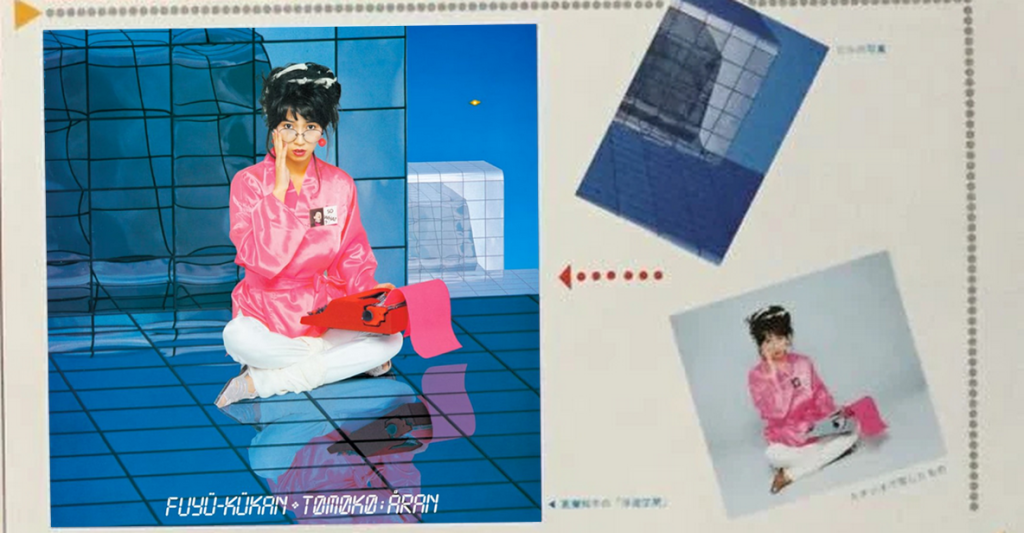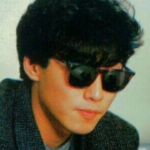Albums cover from the 80s are among the best in image & creativity. City-Pop makes no exception. From Tatsuro Yamashita to ANRI, Toshiki Kadomatsu, Miki Matsubara…and about every city-pop/J-pop affiliated artist.
One cover stands out more than the others, it’s Fuyü Kükan by Tomoko Aran. The background seems out-of-time (no pun intended !), as it’s effectively different from other city-pop albums, that mostly feature the artist in a fashion way, either outside or in studio with a clear wallpaper.
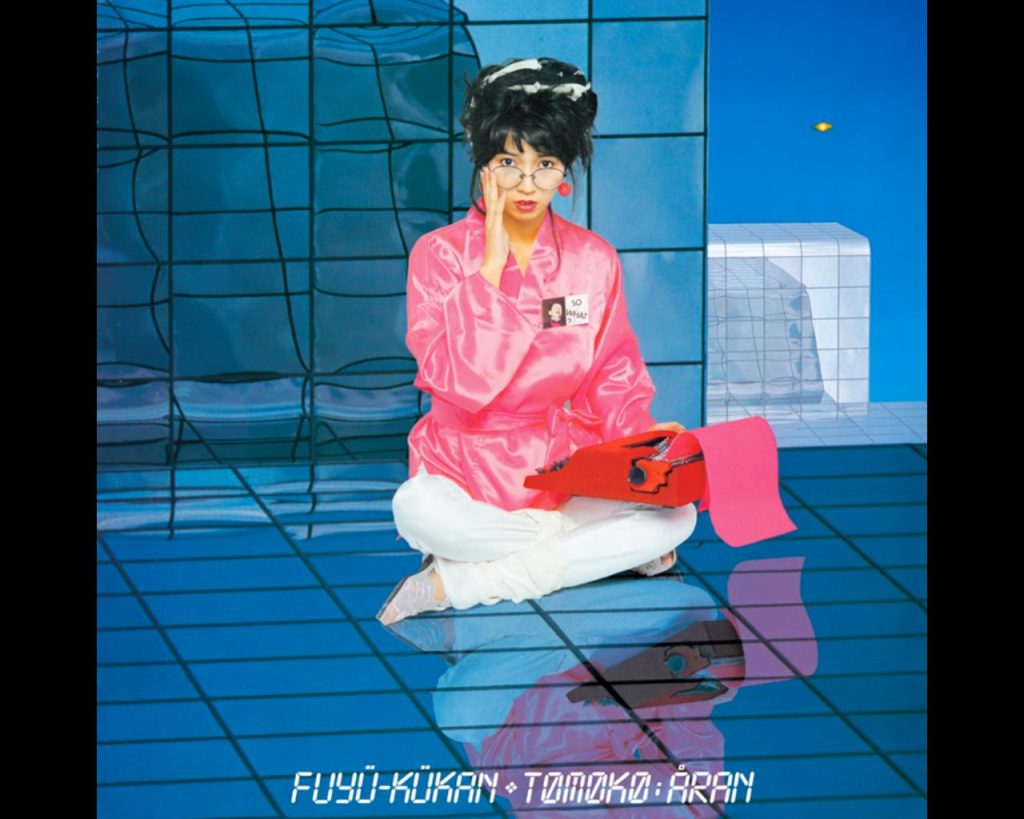
Studio creation or CGI ?
Looking at the album cover, it can be hard to determine wherever it’s a studio set-up created from skratch, or a CGI (Computer Generated Image) that has been used. Also, 1983 wasn’t really a time where computers could have enough power to do it. Ultimately, the answer is being given by this document :
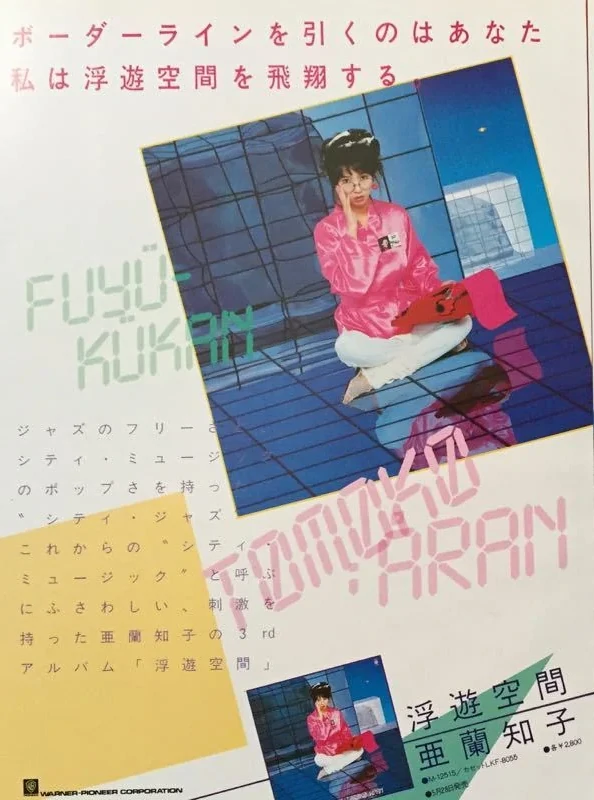
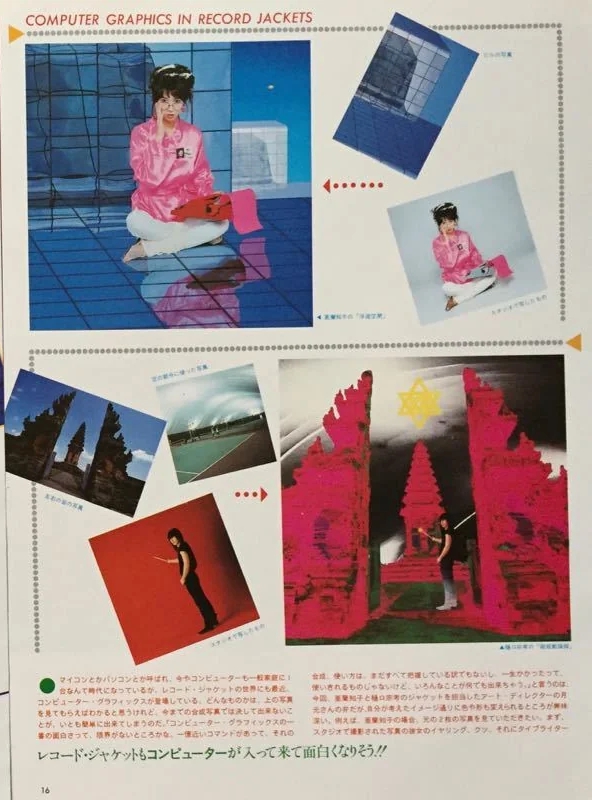
It’s unsure where this come from, it seems to be a magazine, but it also can come from a promo material. We clearly see the mention “Computer graphic” in the second page, and also the original studio footage being done on a solid color. So yes, it’s definitely a computer from around 1983 that did the trick. But not an ordinary home-computer that did it. To get an idea, 1983 was also the release date of the Nintendo video-game console Famicom (Nes in USA, Nintendo in Europe).
Japanese Drummer Munetaka Higuchi (Loudness) also did it
If you are wondering who is the other artist in this flyer, we did the search for you. It’s Munetaka Higuchi (樋口宗孝), famous for playing for the Heavy-j-rock band Loudness. The album is from his solo-career and is called “Destruction” (ディストラクション). Unfortunately, Munetaka Higuchi passed away in 2008.
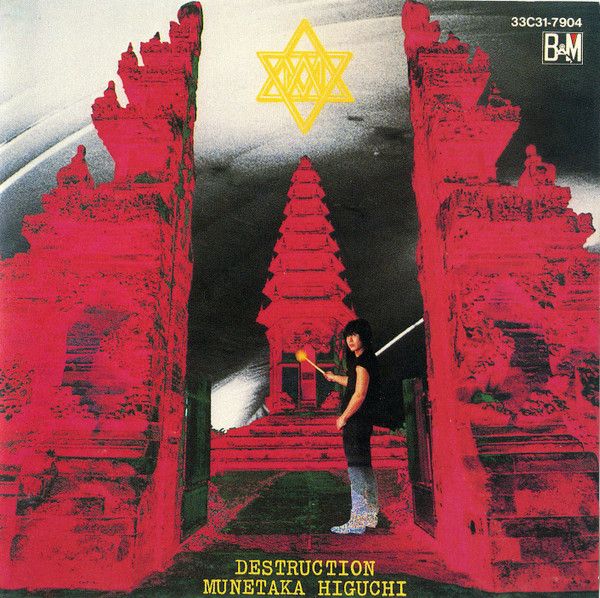
The art seems to represent a Cambodian temple (alongside with an interior tennis court). The full-album can be heard here.
Supercomputers in the 70s and 80s
Supercomputers (also known as “Supercalculator”) are computers designed to achieve the highest performance possible with the techniques known when it was designed. Supercomputers are years ahead of their time. Let’s take for example the notorious Cray-1
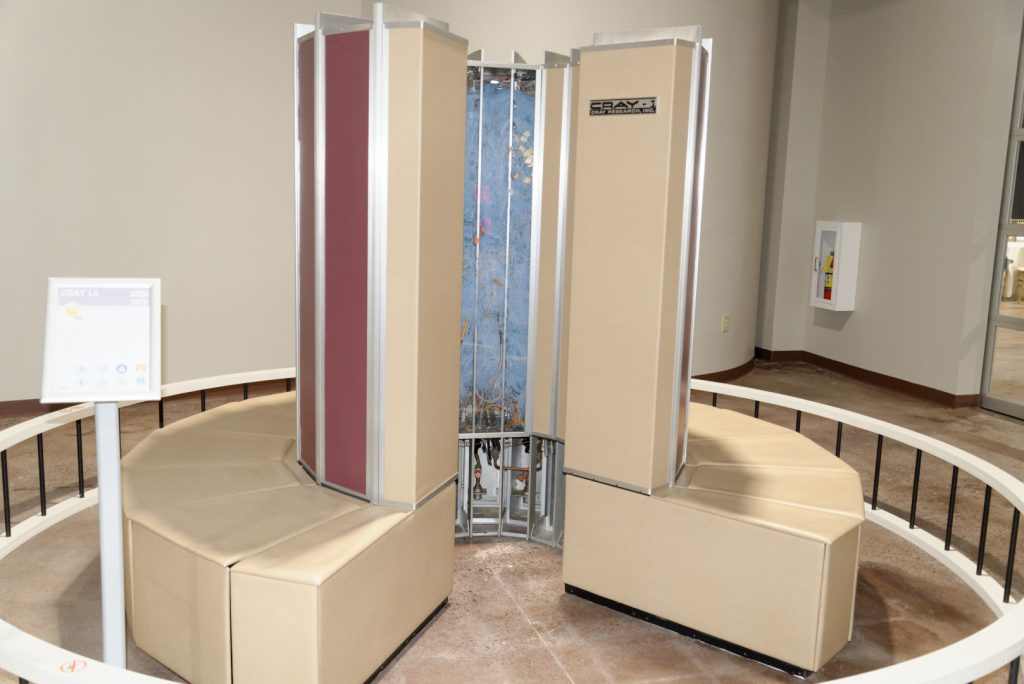
The Cray-1 was released in 1975. It’s CPU is 80Mhz. Roughly, it’s equivalent to a home modern PC from around 1995 (Other parameters come into play, but let’s stick to that for simplicity).
In 1982, it’s successor, the Cray X-MP was released. It’s 4x ~110Mhz, so it’s (roughly, again) equivalent to a Pentium 3 450 Mhz, a home modern PC around 2000.

From a gaming perspective, 2000 is the era of games likes “The Sims”, “Diablo 2”, “No One Lives Forever”, “Jet Set Radio” and “Quake 3”. But we are not talking about real-time 3D here, more about 2D. And a computer from that era was totally able to generate a high-end 2D image. Seeing the Fuyü-Kükan album, it all make sense.
Supercalculators in Japan in 1982/1983
Japan had their own research and technology. Like Germany, being deprived of the army and military research, it is natural that all their efforts have been focused on non-military technology. We all know Walkman, Japanese cars, and big brands like Fujitsu, Canon, Mitsubishi, Yamaha, Akai, etc…
Supercomputers are not to be outdone, and moreover they are often a benchmark of a country’s power. Fujitsu and Hitachi began making supercomputers in 1977 and 1978, and in 1982, Fujitsu, Hitachi and, NEC announced new supercomputers. They were around the same power as the Cray X-MP.

So, which computer was used for generating the Fuyü-Kükan album cover ? It’s hard to say. It may be none of them.
Midnight pretenders
Another supercomputer that could fit is the LINKS-1 from Osaka.
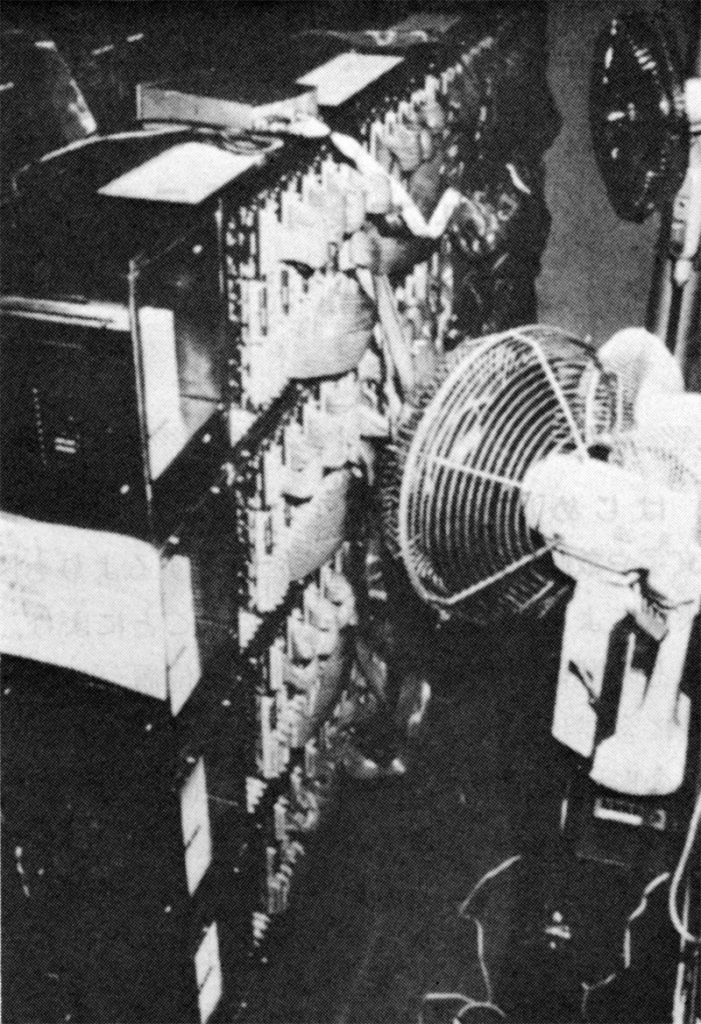
From the IPSJ Museum website we can read :
LINKS-1 was a prototype multiple microcomputer system for computer graphics built by a group consisting of professors Ohmura Kouichi, Shirakawa Isao, and Kawata Toru and a total of 50 students from the School of Engineering at Osaka University. After the system was completed at the end of October 1982, it was used in the production of many highly realistic videos.
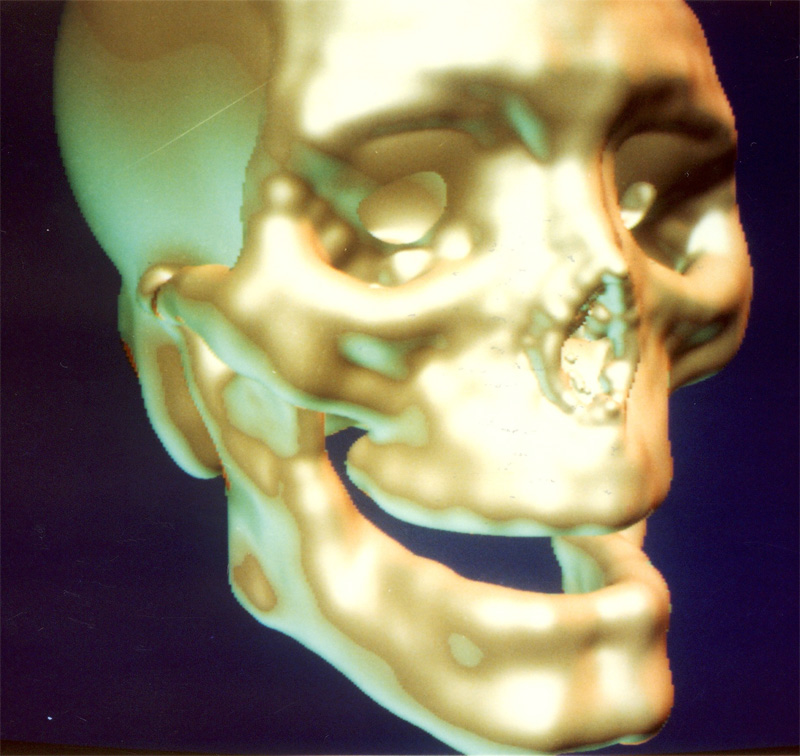
Although it is said to do video and 3D, it may also been used for static 2D creation (which seems in fact a 3D-made background). Unless we have proof, we cannot be 100% sure if it’s that computer that has been used. But the theory is that often student are often very interested in modern art, like city-pop was in the 80s.
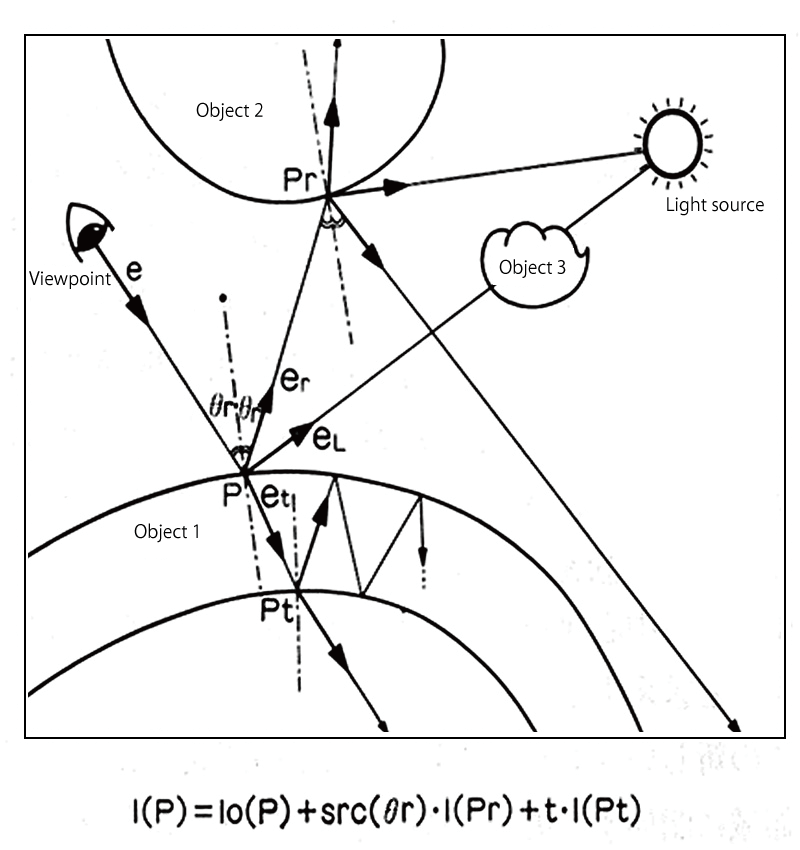
How AFTER 5 did it ?
Nowadays, in 2023, we have powerful computers and powerful programs. It wasn’t hard to find someone with photoshop skill to do the job. We contacted about 30 freelance on websites like Fiverr or ComeUp. Some weren’t available, some did not feel skilled enough, but some replied, and in the end we worked with 3 of them. But before even contacting anyone, we had a photo-shooting. The important accessory here is the red typewriter. It wasn’t hard to find one, we easily found a second-hand typewriter for about 40€ (In fact, if you look again at Tomoko Aran original picture, you can see her type-writer isn’t red, but more white/gray !) For the shooting, we did a traditional green-screen shooting :
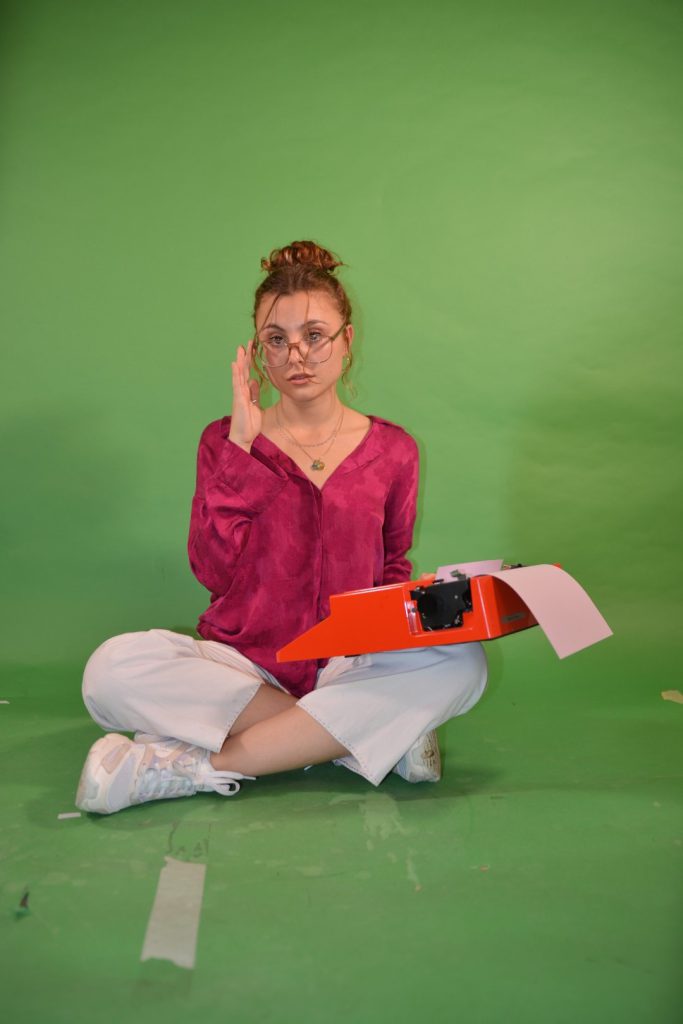
Now, the freelancer used Fuyü Kükan picture use AI to enhance resolution, removed a bit Tomoko Aran to keep the background, then add our singer, and voilà !
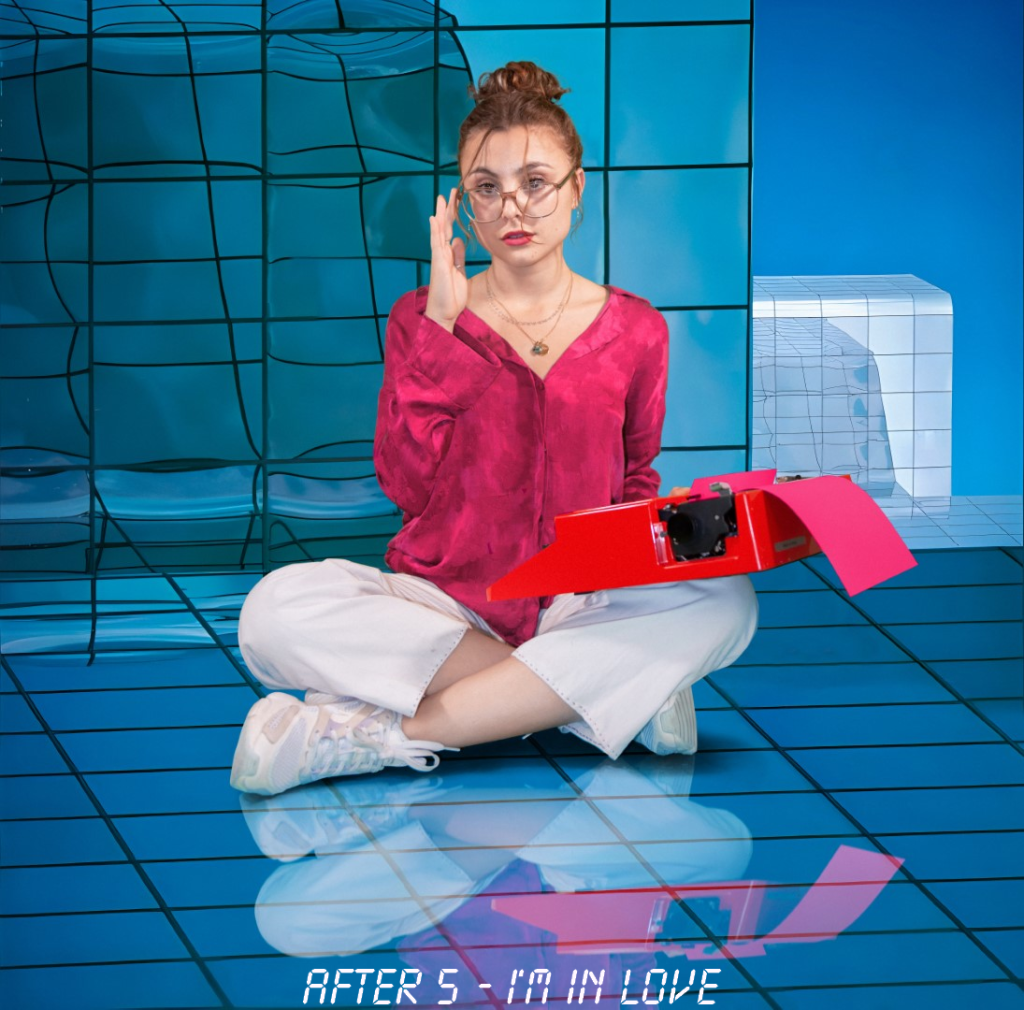
It’s amazing to see how technology has evolved so much in 40 years. We would love to know more about the behind the scene of album cover, so contact us on social media if you have any information !
You can listen to AFTER 5 version of I’m in love on Youtube or Spotify
Source :
https://www.reddit.com/r/citypop/comments/taqw1n/an_original_flyer_advertisement_for_tomoko_arans/
https://en.wikipedia.org/wiki/Cray-1
https://en.wikipedia.org/wiki/Supercomputing_in_Japan
http://museum.ipsj.or.jp/en/computer/other/0013.html
http://museum.ipsj.or.jp/en/computer/super/0007.html

